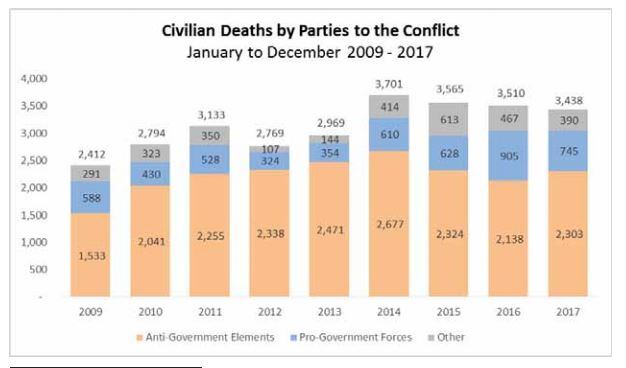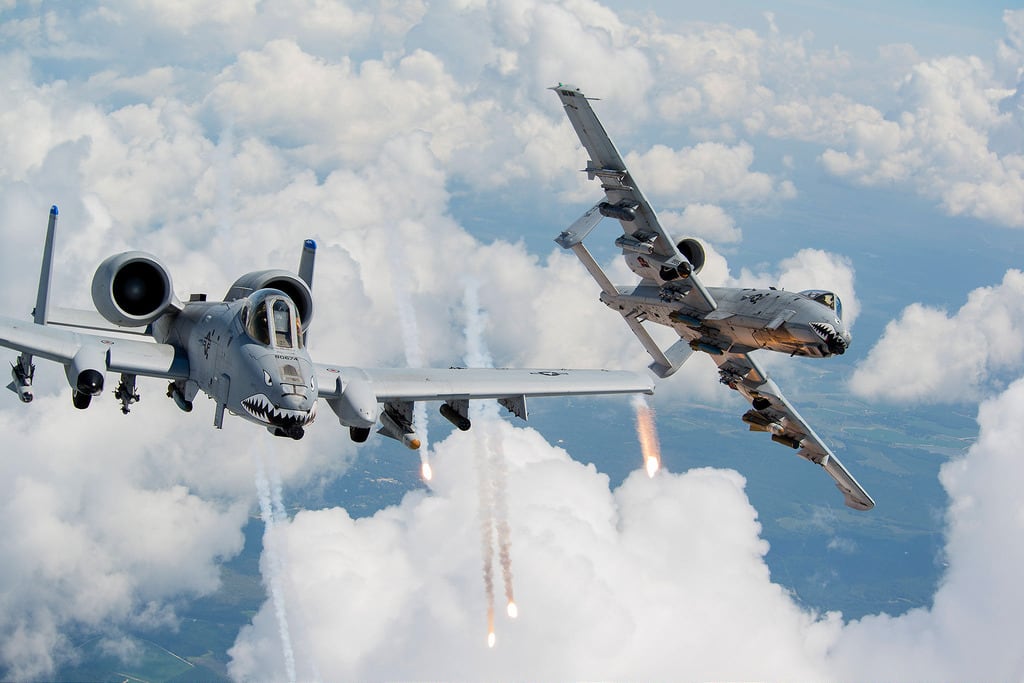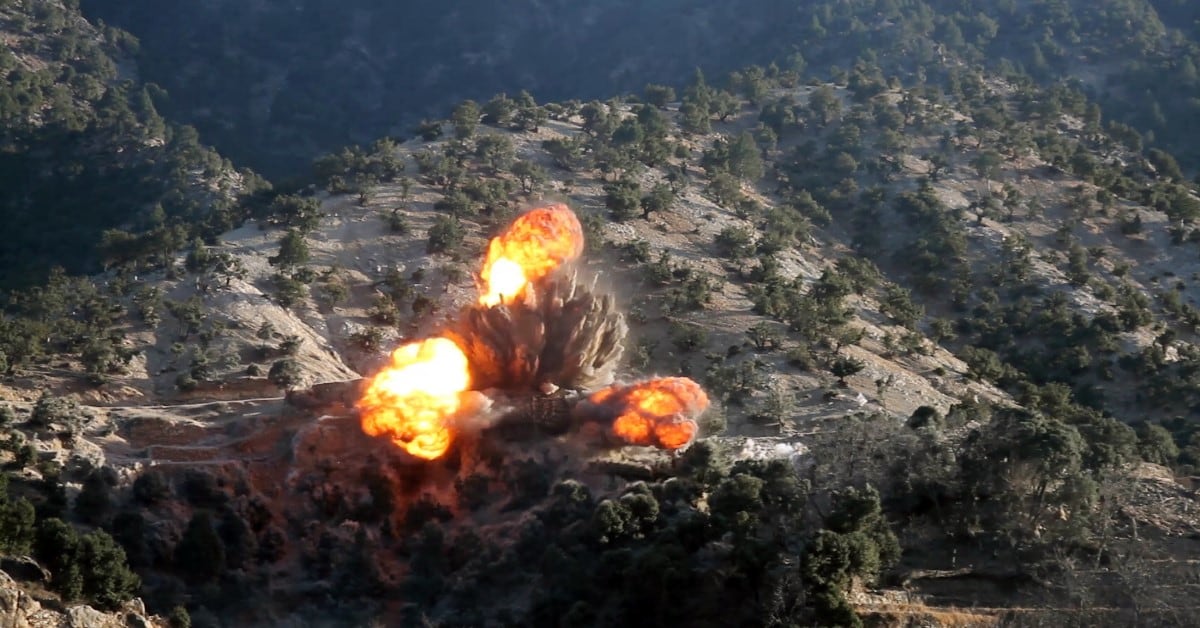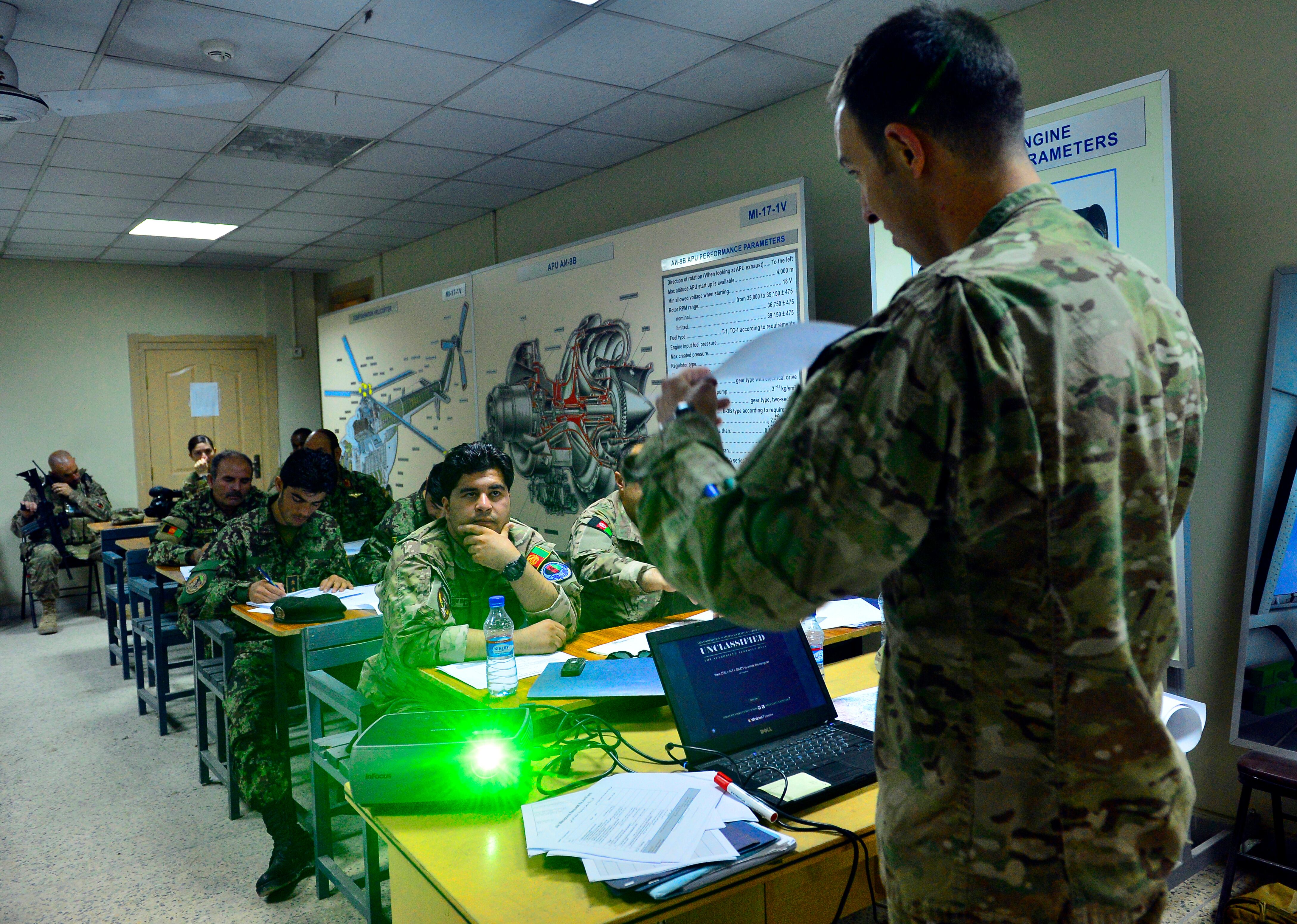The number of Afghan civilian casualties declined by 9 percent in 2017, and civilian deaths caused by pro-government forces in particular dropped 23 percent, according to the annual report by the United Nations Assistance Mission in Afghanistan.
Despite this good news, the UN mission still documented a 7 percent increase in civilian casualties from air operations specifically, and advised better air-to-ground integration through the Afghan version of joint terminal attack controllers.
“Every loss of civilian life is deeply regrettable. However, during a time when air operations dropped weapons 300 percent more than the previous year, civilian casualty rates didn’t come close to matching that increase,” Army Lt. Col. Koné Faulkner, a spokesman for U.S. Forces-Afghanistan, told Military Times.
“UNAMA observed trends in their data that are similar to our observations, most notably that insurgents remain disproportionately the largest perpetrators of civilian casualties,” Faulkner said.
The UN mission took note of that fact, and added in the report that “efforts and actions“ taken by U.S. and Afghan forces “towards the improvement of protection for civilians must be commended.”

Over the past year, the Afghan Air Force has grown rapidly, importing UH-60 Black Hawks, more A-29 light attack aircraft, and increasing its organic airstrike capacity by training with laser-guided bombs.
That autonomy must continue to expand, the UN mission advised in its report. In particular, the UN identified Afghan Tactical Air Coordinators, or ATACs, as critical to decreasing collateral damage and refining the targeting process.
Fielding more ATACs would help with deconfliction on a complex battlefield, as they are trained to prepare strike packages that include precise coordinates of all enemy targets, friendly forces and civilians for combat aircraft engaged in close-air support.
RELATED

Currently, though, the UN “mission is concerned with [DoD] reports that [ATACs] trained are rarely used in their roles for Air-to-Ground Integration,” the report stated.
“A recent survey found that only 11 of 290 trained ATACs were actually employed in their assigned ATAC role,” the Pentagon determined in a December audit. “In a number of cases, trained ATACs filled roles as armed security at [Afghan National Army] checkpoints and other duties.”

Faulkner countered that existing ATACs “are very much engaged in the fight.” And although he wouldn’t go into specifics, he added “they have been integrated in a number of operations, allowing for the successful coordination of airstrikes throughout Afghanistan.”
The need for ATACs is underscored by the increasingly urban nature of Taliban offensives.
RELATED

One local man recounted to the UN mission an incident on Aug. 30 in which a Taliban fighter used his home in Logar province as a firing position.
“There was a man with a rocket launcher behind our house. My brother told him to move away, saying, ‘go away from here, please! There are children and women here!’ We saw him start to move away, but when my brother was returning to the house, a rocket was fired, and we heard an explosion followed by heavy gunfire at the house. My family all sought shelter inside,” he said.

“After a few moments, a bomb was dropped on the house,” he added. “Thirty-one people were in the house at the time. This was too much for just one Taliban. He could have been dealt with another way. I ask that you try to make sure this does not happen to others.”
The incident killed 13 civilians, including 10 children and three women, and injured another 12 people, according to the UN mission.
“We are keenly aware of insurgents exploiting their close proximity to civilians, often by force, to prevent airstrikes and counterattacks on their positions,” Faulkner said.
If identified in time, Afghan pilots have responded to the presence of civilians around enemy combatants by choosing not to attack at all, according to Faulkner.
“For example, roughly 30 percent of all Afghan strike missions return with the munitions they depart with because they have identified civilians at the target site or were unable to positively identify the target,” he said.
Under the Trump administration’s South Asia Policy, U.S. forces have the authority “to target Taliban leadership, financiers, trainers and logistics elements,” Faulkner said. “Continuing to pursue the enemy throughout the country, both in rural and urban areas, is key to the security of Afghanistan.”
Kyle Rempfer was an editor and reporter who has covered combat operations, criminal cases, foreign military assistance and training accidents. Before entering journalism, Kyle served in U.S. Air Force Special Tactics and deployed in 2014 to Paktika Province, Afghanistan, and Baghdad, Iraq.




